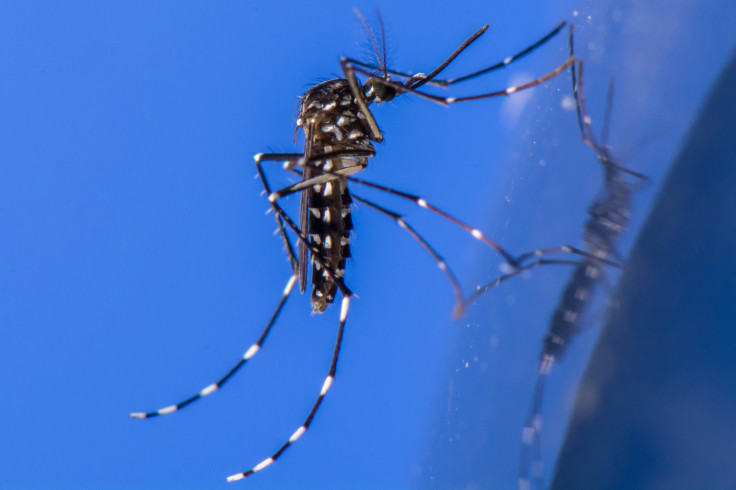At Least 15 Cases Of Locally-Acquired Dengue Fever Have Hit Hawaii. Can Dengue Spread Elsewhere In The States?

Dengue fever is once again making waves in the island state of Hawaii, with 15 locally-acquired cases of the mosquito-borne viral disease confirmed by health officials as of Tuesday.
These individuals, unlike the occasional rare case of dengue brought over from elsewhere, were infected by mosquitoes native to Hawaii, signifying the possibility of a still-larger outbreak. As of now, the cases have been primarily traced to the western side of the largest island, Hawaiʻi (the Big Island), and it is believed that the risk of it spreading elsewhere in the island chain is low. Regardless, the reemergence of the dengue virus (DENV) in the local mosquito population, the first recorded instance since 2011, is troubling.
“At this point, we’re seeing it particularly in areas south of Kona, in Hookena and Honaunau. But it’s not just at one point or area...Unfortunately, those are not the only areas. Your entire island is at risk,” State Epidemiologist Dr. Sarah Park told the Hawaii Tribune-Herald on November 3. Earlier this Tuesday, state officials closed down the Hookena Beach Park in order to conduct “mosquito control and pesticide treatments,” according to Civil Defense Administrator Darryl Oliveira.
Dengue fever is an oftentimes excruciating experience for its unlucky human passenger, with fever, headaches and muscle pain 5 to 7 days after the original bite. A rash on your body’s extremities (hands, feet) may also appear 3 to 4 days after the fever along with slight bleeding. Unsurprisingly, another name for dengue is breakbone fever.
While these symptoms usually subside in 1 to 2 weeks without lasting harm, dengue can rarely progress to much more severe forms known as dengue hemorrhagic fever (DHF) and dengue shock syndrome (DSS). The massive internal bleeding that occurs as a result of DHF is often fatal. It’s believed that people who have already been infected by one form of the dengue virus are at greater risk of developing DHF upon being infected again by another — there are in total 4 main forms of DENV.
Locally-Acquired
According to the World Health Organization (WHO), dengue fever is currently the fastest growing mosquito-borne disease in the world, trumping even malaria and West Nile virus. In the past fifty years, there’s been a 30-fold increase in its incidence, with “an epidemic potential in the world,” according to the WHO.
Most dengue cases are found in the tropical areas of Asia, Africa, the Caribbean and the South Pacific. But should anyone else in the United States be worried as well? The short answer is yes, but for the time being, only if they live in the southernmost part of the country.
Over the past decade, there have been recorded outbreaks of dengue in Texas, Florida and, of course, Hawaii (dengue is also endemic in Puerto Rico). Like the current one facing Hawaii, these outbreaks were traced to their respective local mosquito populations.
That’s because the dengue virus can typically only be spread by mosquitoes belonging to the Aedes genus. Unfortunately, most of the US plays host to at least one of two, but often both, such mosquito species — Aedes aegypti and Aedes albopictus. In other words, someone who has imported dengue in their blood from elsewhere can transmit it to a native mosquito here, who will in turn spread it to their bloodsucking comrades, and they can then regift it back over to uninfected humans.
“Dengue has the potential to reemerge as a public health threat in many areas of the U.S., and dengue outbreaks could have severe health and economic consequences,” cautioned a 2012 report in Public Health Affairs (dengue, along with other mosquito-borne diseases like yellow fever, was once common in the U.S. before extensive sanitation reforms).
For now, it seems that the largest stumbling blocks to a wider resurgence of dengue fever are geography and temperature, since the recent outbreaks are just in particularly warm states that hover close to already dengue-infected countries like Mexico. A steadily warming climate, coupled with greater international travel, however, might change that outlook drastically, but only if we’re not prepared for it.
“To prevent and mitigate the impacts of dengue, early investments are needed to detect outbreaks and limit spread,” concluded the 2012 report. “Public health practitioners must be alerted to the possible occurrence of dengue in the population and engage with the public to increase awareness about dengue.”



























